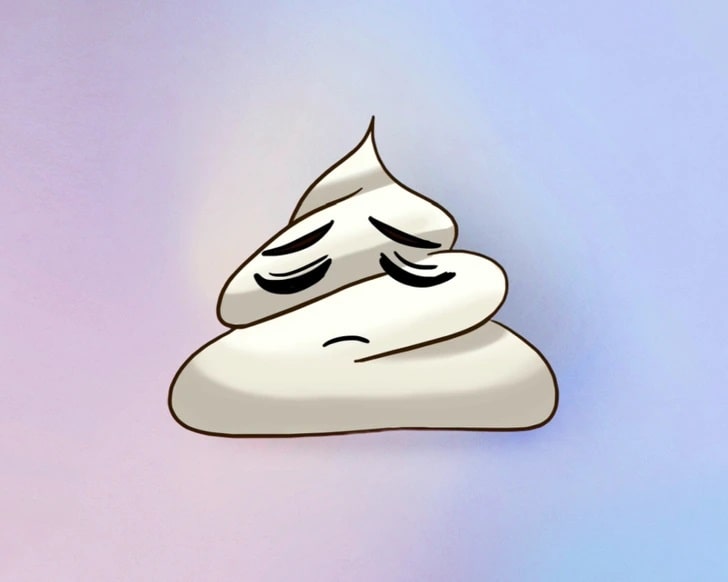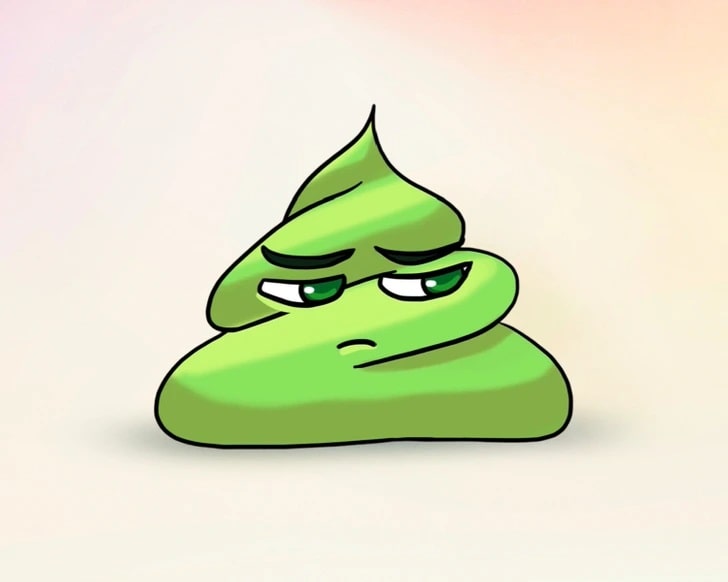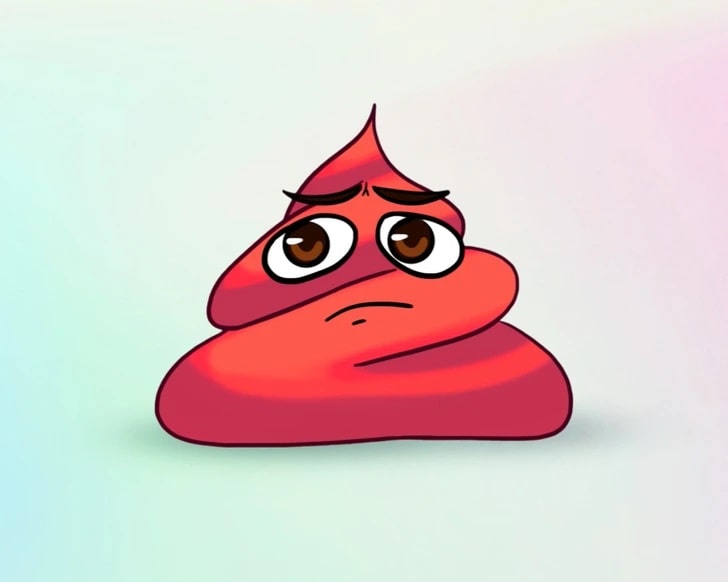Our bodily functions can often serve as valuable indicators of our overall health, and one such bodily function that can provide valuable insights is our bowel movements. While it may not be the most glamorous topic, examining our poop can reveal important clues about our well-being. Stool color, in particular, can be an excellent indicator of underlying health issues. In this article, we will explore various stool colors and what they may be trying to tell us about our health.
When it comes to monitoring our health, we often tend to focus on visible symptoms or undergo medical tests. However, paying attention to the color of our stool can be a simple and informative way to gain insights into our digestive system and overall well-being. The color of our poop is influenced by various factors, including our diet, hydration levels, and any underlying medical conditions. By understanding what different stool colors may indicate, we can be proactive in addressing potential health concerns.
Understanding Stool Color
The color of our stool is primarily determined by the presence of bile, a digestive fluid produced by the liver and stored in the gallbladder. Bile plays a crucial role in breaking down fats and absorbing essential nutrients from our food. The presence or absence of bile in our stool can significantly impact its color.
Common Stool Colors and Their Indications
White Stool: Possible Causes and Indications

The white stool can be a cause for concern as it may indicate issues with the liver and gallbladder. Conditions such as liver disease, hepatitis, or gallstones can disrupt the normal production and flow of bile, resulting in pale or white-colored stool. Lack of bile in the stool can also lead to poor fat absorption, causing it to appear lighter.
Liver and Gallbladder Issues: Liver diseases such as cirrhosis, hepatitis, or liver failure can interfere with the production and secretion of bile, resulting in white stool. Similarly, gallbladder problems, such as gallstones or inflammation, can obstruct the bile ducts, leading to pale-colored stool. It’s important to consult a healthcare professional if you notice persistent white stool as it may indicate an underlying medical condition.
Lack of Bile: The absence of bile in the stool can occur due to conditions such as biliary atresia, a congenital disorder where the bile ducts are either missing or blocked. Additionally, certain medications or surgical procedures that affect bile production can also result in white-colored stool. It’s crucial to seek medical advice to determine the underlying cause and receive appropriate treatment.
Green-Colored Stool: Possible Causes and Indications

Green-colored stool may be alarming at first, but it’s often a result of dietary factors or rapid transit through the digestive system. However, there are instances where green stool can signify an underlying health issue.
Diet and Food Choices: Consuming a significant amount of leafy green vegetables, such as spinach or kale, can give your stool a green hue. Similarly, consuming foods with green food coloring, like certain candies or drinks, can temporarily affect stool color. In these cases, the change in stool color is harmless and typically resolves on its own.
Digestive System Disorders: In some cases, green-colored stool may be a sign of a digestive system disorder, such as celiac disease or Crohn’s disease. These conditions can cause malabsorption or inflammation in the intestines, leading to changes in stool color. If you experience persistent green stool along with other gastrointestinal symptoms, it’s advisable to consult a healthcare professional for a proper diagnosis.
Yellow-Colored Stool: Possible Causes and Indications

The yellow-colored stool can be attributed to various factors, including the presence of excess fat in the stool or issues with the liver and gallbladder.
Excess Fat Absorption: When the body is unable to properly absorb fat from the diet, it can result in yellow, greasy stool. This may occur due to conditions like pancreatic insufficiency, where the pancreas does not produce enough digestive enzymes to break down fats. Additionally, diseases such as celiac disease or Crohn’s disease can affect fat absorption, leading to yellow stool.
Liver and Gallbladder Problems: Liver or gallbladder issues, similar to those mentioned in relation to white stool, can also cause yellow-colored stool. If the liver is unable to process bilirubin effectively or if there is a blockage in the bile ducts, it can result in changes in stool color. Consulting a healthcare professional is recommended to identify the underlying cause and receive appropriate treatment.
Black Stool: Possible Causes and Indications

Black-colored stool, also known as melena, can be an alarming sign as it may indicate internal bleeding within the digestive system.
Digestive System Bleeding: Bleeding in the upper gastrointestinal tract, such as the stomach or esophagus, can result in the appearance of black stool. This occurs due to the breakdown of blood as it passes through the digestive system. Conditions like stomach ulcers, gastritis, or gastrointestinal bleeding from prolonged use of nonsteroidal anti-inflammatory drugs (NSAIDs) can contribute to black stool. It is essential to seek immediate medical attention if you observe persistent black stool, as it may indicate a serious underlying condition.
Certain Medications and Supplements: The use of certain medications and supplements, such as iron supplements or bismuth subsalicylate (found in some over-the-counter medications for digestive issues), can also cause stool to appear black. These substances can temporarily darken stool color and are generally not a cause for concern. However, if you are unsure about the cause or experience other concerning symptoms, consult with a healthcare professional.
Reddish-Yellow Stool: Possible Causes and Indications

Reddish-yellow stool, often described as clay-colored or pale yellow with a reddish tinge, can indicate the presence of blood in the stool or underlying inflammatory bowel disease (IBD).
Presence of Blood: Blood in the stool, which may be fresh or partially digested, can give it a reddish-yellow appearance. This can occur due to various reasons, such as bleeding from the lower gastrointestinal tract or hemorrhoids. In some cases, conditions like colorectal cancer or anal fissures can also lead to the presence of blood in the stool. It’s crucial to consult a healthcare professional for a proper evaluation and diagnosis.
Inflammatory Bowel Disease: Inflammatory bowel diseases, such as Crohn’s disease or ulcerative colitis, can cause inflammation and damage to the digestive tract. This inflammation can impact the production and flow of bile, resulting in changes in stool color. If you have been diagnosed with an inflammatory bowel disease and notice persistent reddish-yellow stool, it’s important to work closely with your healthcare provider to manage your condition effectively.
Hard, Pellet-Like Stool: Possible Causes and Indications
Having hard, pellet-like stool occasionally is generally not a cause for concern. However, if it becomes a recurring issue, it may signify underlying factors such as dehydration, lack of fiber in the diet, or slow bowel movements.
Dehydration and Lack of Fiber: Insufficient fluid intake can lead to dehydration, which can result in harder stools. Additionally, a diet low in fiber can contribute to difficulties in passing stool and the formation of hard pellets. Increasing water consumption and incorporating fiber-rich foods, such as fruits, vegetables, and whole grains, into your diet can help alleviate this issue.
Slow Bowel Movements: Slow bowel movements, also known as constipation, can cause stool to become dry and hard. Factors such as a sedentary lifestyle, lack of physical activity, or certain medications can contribute to sluggish bowel movements. It’s important to maintain a balanced diet, stay hydrated, and engage in regular exercise to promote healthy bowel movements.
Cracked Stool: Possible Causes and Indications

Cracked stool, often described as narrow or ribbon-like, can indicate issues such as dehydration, constipation, or a poor diet lacking in fiber.
Dehydration and Constipation: Inadequate fluid intake can lead to dehydration, which can contribute to constipation and the appearance of cracked stool. When the body lacks sufficient water, it absorbs more water from the colon, resulting in dry and hardened stool. This can cause the stool to appear cracked or ribbon-like. Increasing water intake and maintaining hydration levels can help alleviate constipation and improve the consistency of stool.
Poor Diet and Lack of Fiber: A diet low in fiber can also contribute to cracked stool. Fiber plays a crucial role in maintaining regular bowel movements and adding bulk to the stool. Insufficient fiber intake can lead to harder and more difficult-to-pass stool. Incorporating fiber-rich foods, such as whole grains, legumes, and fresh fruits and vegetables, can promote healthy digestion and prevent cracked stool.
Conclusion
Paying attention to the color and consistency of our stool can provide valuable insights into our digestive health. While variations in stool color are often attributed to diet and temporary factors, persistent changes or concerning colors should not be ignored. It’s important to consult a healthcare professional if you notice unusual or persistent changes in stool color, as it may indicate underlying health conditions that require proper evaluation and treatment.
FAQs
Why is it important to pay attention to stool color? Monitoring stool color can help detect potential health issues, as certain colors may indicate underlying conditions or digestive problems. Being aware of changes in stool color can prompt early intervention and treatment.
Can certain foods cause changes in stool color? Yes, certain foods, food dyes, and food additives can temporarily affect stool color. Consuming foods like leafy greens or foods with artificial coloring can lead to color variations in the stool.
When should I be concerned about black stool? Black stool can be a sign of internal bleeding, especially if accompanied by other symptoms like abdominal pain or dizziness. If you notice persistent black stool, it is essential to seek immediate medical attention.
Is it normal to have occasional hard, pellet-like stool? The occasional hard, pellet-like stool can be normal, especially if dietary or hydration factors are involved. However, if it becomes a recurring issue or is accompanied by discomfort, it’s important to evaluate lifestyle habits and consider dietary changes.
What steps can I take to maintain a healthy stool? To maintain a healthy stool, ensure an adequate intake of water, consume a balanced diet rich in fiber, engage in regular physical activity, and maintain a healthy lifestyle overall.









